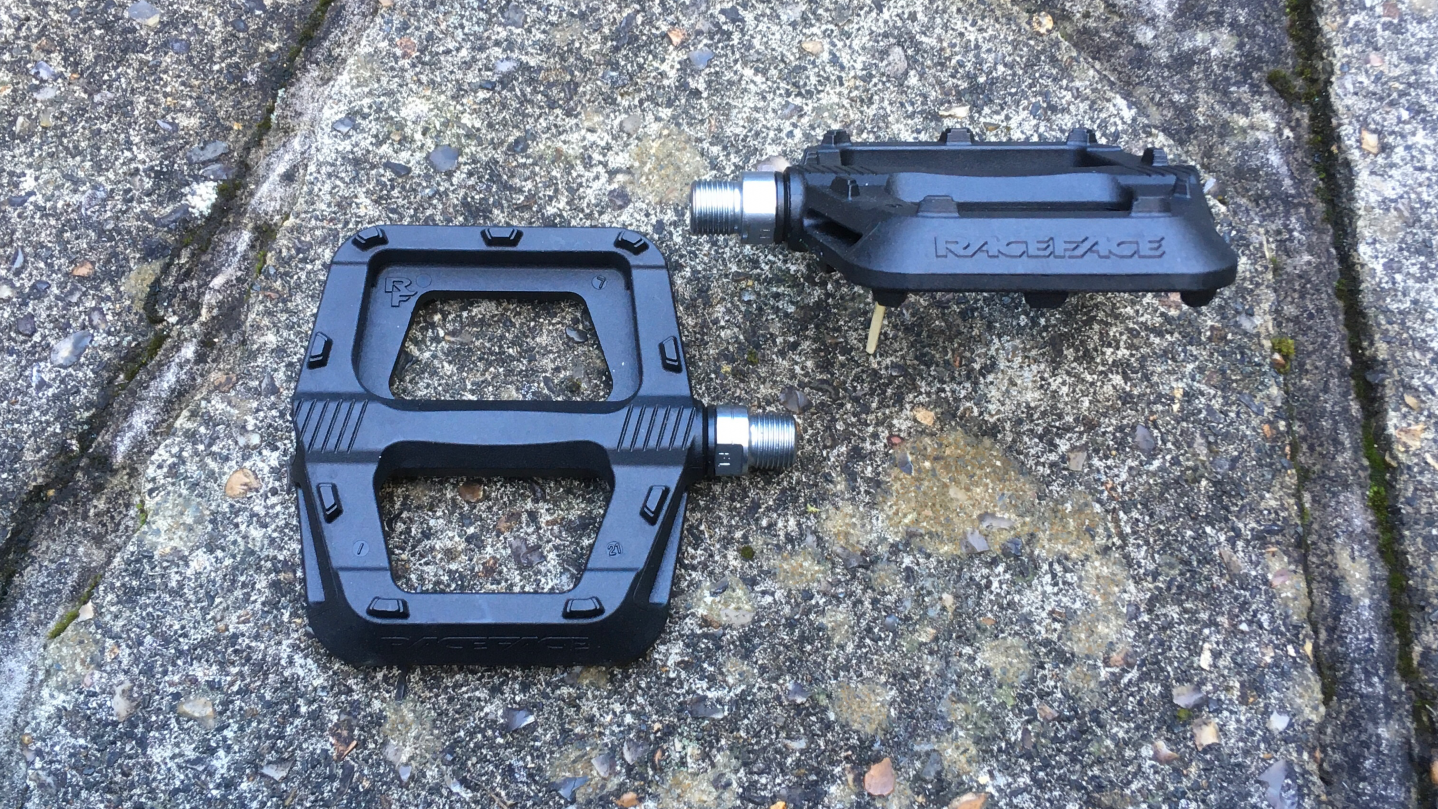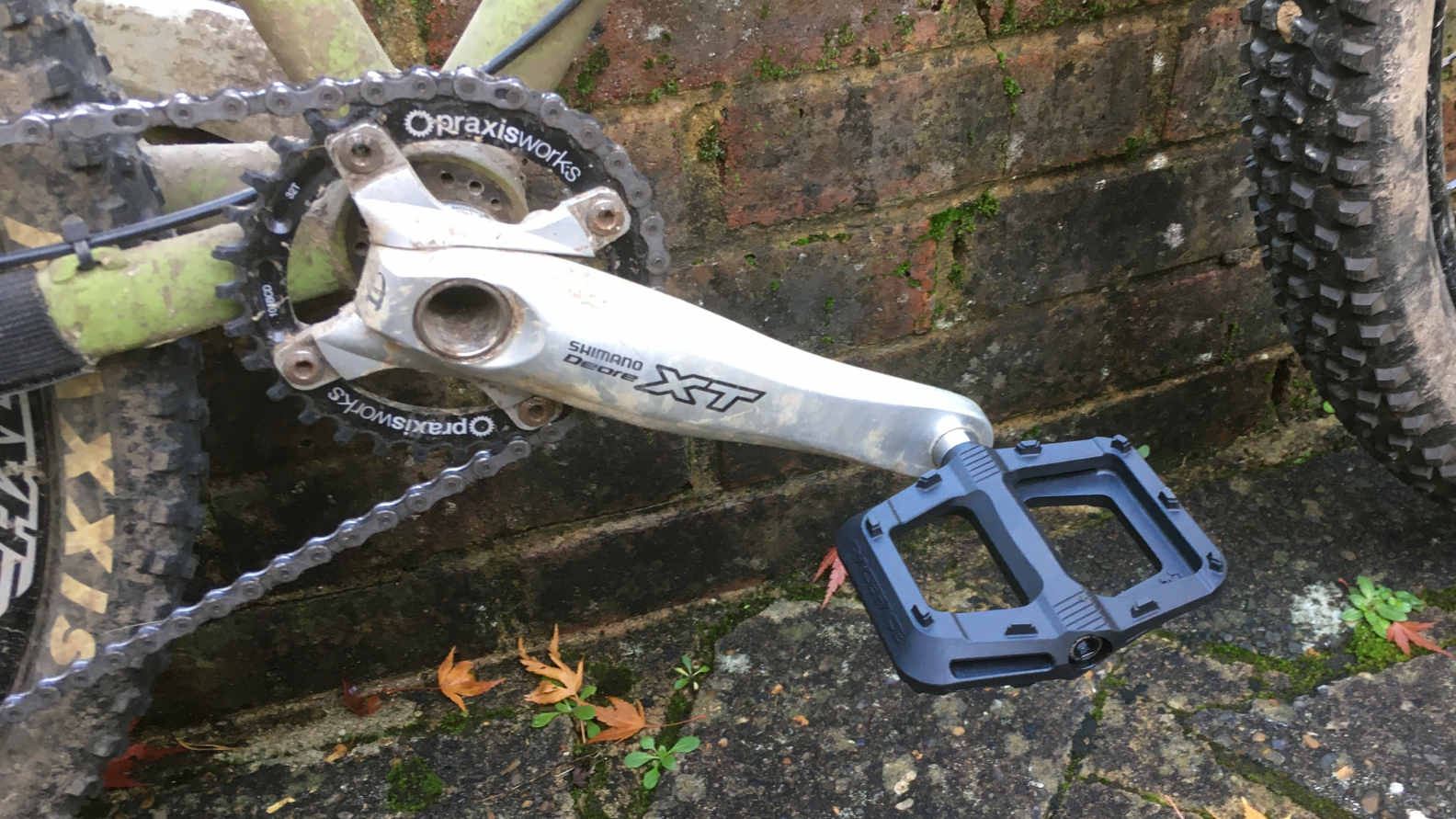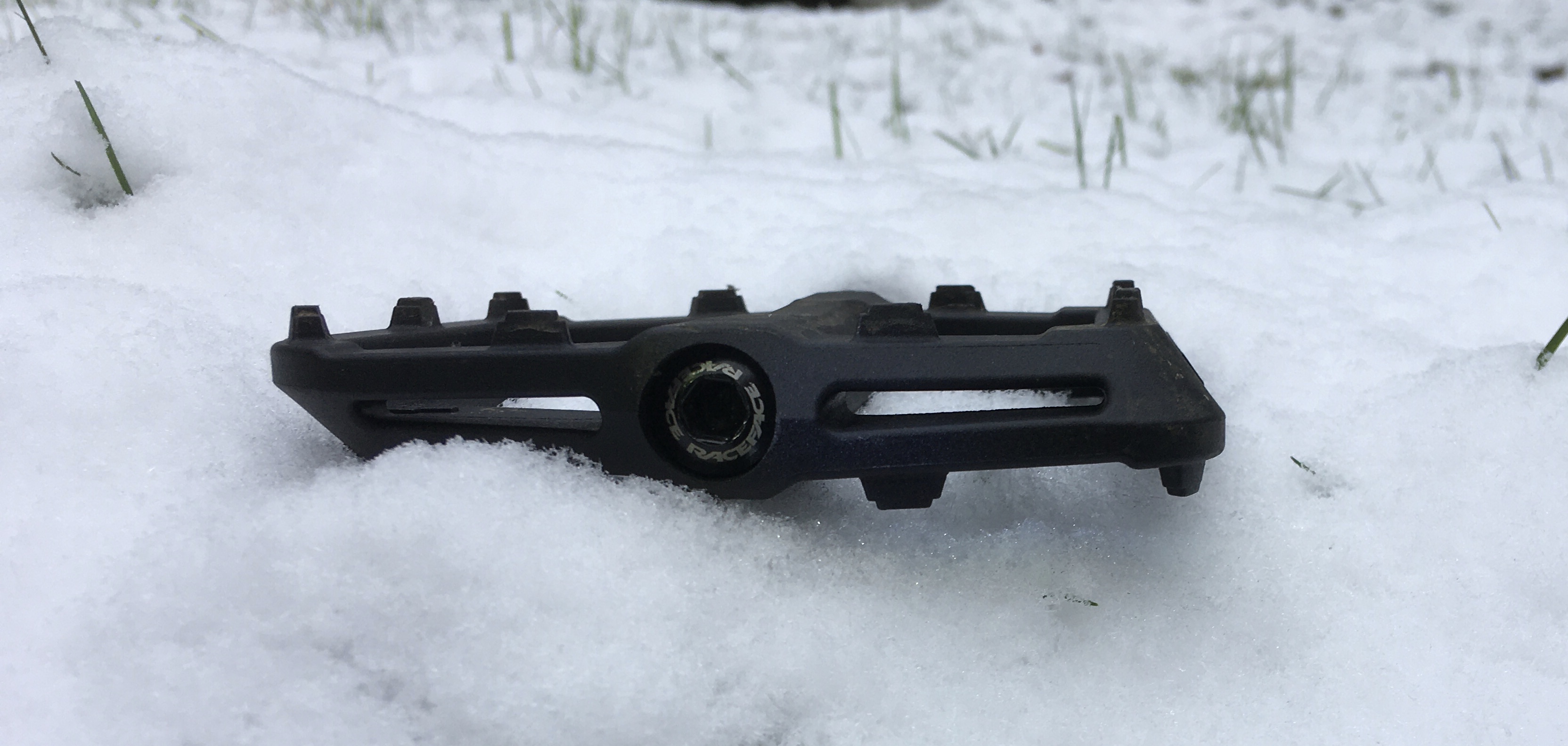Raceface Ride Pedal review – a good 'starter' pedal, although there are cheaper options
A good first upgrade pedal which come in a rainbow of colours to match your bike

As a first upgrade on a new bike for novice riders, these are good pedals. However a more experienced rider may need to look elsewhere for superior grip, possibly with metal pins. The grippy-ness of these pedals really depends on the soles of your shoes.
-
+
Good price
-
+
Excellent selection of colours
-
+
Fairly light
-
+
Good looking
-
+
Maintainable
-
-
Not as grippy as some
-
-
Choose your shoe wisely
You can trust Cycling Weekly.
Designed with 'future shredders' and novice riders in mind, Raceface's Ride pedal sports a durable nylon composite body with 18 molded traction studs to provide solid footing, whilst also being kinder and gentler on your shins should you slip up.
There are nine vibrant colours to choose; Black, Blue, Turquoise, Green, Orange, Purple, Red, Yellow and even Magenta. So you should be able to find a pair that matches your ride.
The Raceface Ride pedals feature burly composite nylon, a slim, concave design, and built-in traction treads with molded traction pins for extra sure footing. They are aimed primarily at trail and city use and can be mounted to a variety of bike, including gravel and e-bikes – similar to the very best flat pedals and the best commuter bike pedals.

Raceface Ride Pedal: construction
The Raceface Ride pedals feature a chromoly axle with a nylon composite body and 9 pins per side. The pedal platform measures 110mm x 100mm and weigh 320g (author measured 325g) per pair. The Cro-mo steel axles are sealed to keep the muck out, yet are completely serviceable for when you want to give them a quick tune-up. The end cap uses a 6mm Allen/hex key to remove it, which then allows the bearings to be accessed.
The pedals use either a 6mm Allen/hex key or 15mm pedal spanner to fit and are clearly marked 'L' & 'R' on the axles. No excuses for getting it wrong!

Showing end cap
Raceface Ride Pedal: the ride
Once fitted using either the 6mm Allen/hex key or the conventional 15mm pedal spanner, you're ready to ride. The pedals feel smooth in action when rotating by hand and looked good on the cranks.
I started riding some cross country trails using my Five Ten soled shoes. They gripped nicely and were comfortable to ride with. I tried getting the soles wet on the dewy grass and still all felt secure. Finally I found some mud and walked up and down to fill the soles up before riding further. There was a little movement, now with the sole when rotating the foot left and right on the pedal. Coming out of the saddle to push hard up a steep bank, I detected a bit of slipping. This was all entirely reasonable behaviour.
Next time I used a Salomon Trail running shoe. This has a more rounded sole profile than the Five Ten soled shoe, in that it curves from toe to mid shank more. Whilst it still gripped fairly well, the shoe felt less connected to the pedal. It felt that, although the pedal does concave a bit, it need to be more concave to give more area for the sole to contact with.
My final shoe was similar to an Adidas Gazelle. With its flat, soft sole and micro ridges, it should match the pedal well, certainly compared to the Salomon shoe. However it was the least successful, as it felt as if you were riding primarily on the axle only and it wasn't an overly comfortable experience.
Measuring across the pedal with a straight edge, you can see that there is a small amount of concaveature, with the axle area sitting slightly lower than the top of the pins. However if you place the rule between the outer edges of the pedal (at the base of the pins), and across the axle section then the outer edges sit lower than the axle section.
I think that this is why different soles end up giving quite different feedback to the rider. Certainly when compared to my Shimano Saint MX80 (now PD-GR500) pedals, which are 50 per cent heavier & twice the price, they feel less grippy. The Saints are more concave and use metal pins, which allows you really push into the pedal for grip when you need to. Also the body is concave as well as the pin positioning across the pedal, going from front to back.
Raceface Ride Pedal: value and conclusion
Whilst my comparison with the MX80 pedals might not be entirely fair, I use it to demonstrate the differences rather than to knock the Rides. The Rides are a pedal that you'd buy as a first upgrade from stock pedals provided with a new bike, and very good they'd be going in that direction of upgrade.
The Raceface Rides ($39.99 / £34.95) are reasonably light, nicely made, maintainable, shouldn't gash your shins with a slippage and are available in a rainbow of colours to match your machine. Seen in that context they are good for both relaxed gravel riding and causal urban and e-bike riding.
But if you're willing to spend more for better performance, there are grippier trail pedals, such as the RaceFace Aeffect pedals ($119.99 / £99.95). Likewise for more urban and e-bike use – and despite their name – or the Look Trail Grip pedals offer excellent grip without the use of metal pins ($75.00 / £64.90).
A more direct comparison is with the DMR V6 flat pedals, which also have a plastic body. These provide more grip from their more prominent pins, but those are more prone to damage. The V6s are a bit cheaper though, at ($32.40 / £20.00).

Thank you for reading 20 articles this month* Join now for unlimited access
Enjoy your first month for just £1 / $1 / €1
*Read 5 free articles per month without a subscription

Join now for unlimited access
Try first month for just £1 / $1 / €1
Get The Leadout Newsletter
The latest race content, interviews, features, reviews and expert buying guides, direct to your inbox!
Over 40 years cycling in a variety of disciplines including road riding, commuting, a self-supported Land's End to John o' Groats trip, XC mountain biking and several Polaris Challenge two-day events. Adventure, escape and fun are the motivations for my riding. I also love bike and kit design and have fillet brazed a couple of framesets using Reynolds 853 steel tubing for myself. A very satisfying experience to ride your own bespoke bike!
Height: 180cm
Weight: 66kg
-
 Man hands himself in to Belgian police after throwing full water bottle at Mathieu van der Poel during Paris-Roubaix
Man hands himself in to Belgian police after throwing full water bottle at Mathieu van der Poel during Paris-Roubaix30-year-old was on Templeuve-en-Pévèle cobbled sector when television pictures showed the bottle hitting him in the face
By Tom Thewlis Published
-
 'I'll take a top 10, that's alright in the end' - Fred Wright finishes best of British at Paris-Roubaix
'I'll take a top 10, that's alright in the end' - Fred Wright finishes best of British at Paris-RoubaixBahrain-Victorious rider came back from a mechanical on the Arenberg to place ninth
By Adam Becket Published
-
 'This is the furthest ride I've actually ever done' - Matthew Brennan lights up Paris-Roubaix at 19 years old
'This is the furthest ride I've actually ever done' - Matthew Brennan lights up Paris-Roubaix at 19 years oldThe day's youngest rider reflects on 'killer' Monument debut
By Tom Davidson Published